Covid has prompted homeowners to find new purposes for rooms that see little use. One of those is the dining room. Over the last two years it has served as a combination classroom, office, game/hobby room, reading nook and substitute for our favorite bars and restaurants, thus making it one of the most utilized rooms in the house.
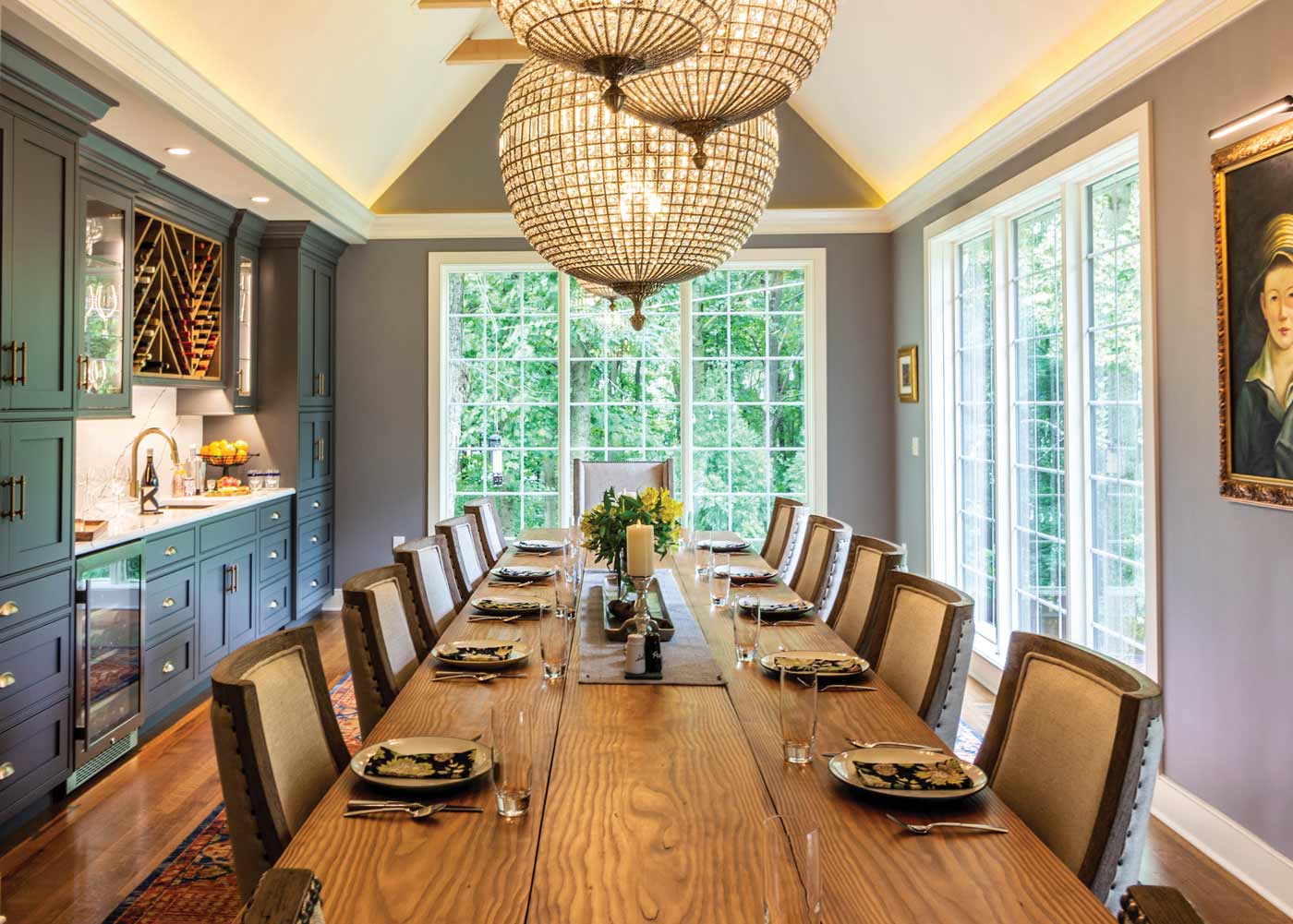
When their lifestyle became more adult-oriented and pivoted to entertaining friends for dinner, empty-nesters Allyson and Dean Eberly enlarged their dining room with a 16-foot addition. Dean, who names design work and woodworking as favorite hobbies, designed and built the dining table himself in spring 2020.
Two phenomenons have contributed to the dining room becoming the forgotten space in American homes. First, the open-concept floor plan, which became popular in the 1990s, made the formal dining room almost obsolete, as families preferred to gather for meals around the kitchen island or in the more casual breakfast room. Even before that, ranch-style homes helped to popularize the eat-in kitchen. Split-levels provided the first inkling of open-concept, as the living and dining rooms flowed into one another.
Lifestyle also impacted the dining room. Our casual way of living, coupled with busy schedules, didn’t mesh with dinner in the dining room. Instead, families were eating in shifts or grabbing something on the go because of late hours at the office, sports practice, music lessons, school activities, etc. Or, worse, they planted themselves in front of the television to eat dinner. As a result, the dining room soon became a place where families gathered only for holiday dinners or special celebrations.
Covid has helped to change our perception of the dining room and it’s becoming a hybridized version of its intended use. It seems that homeowners embraced their downtime over the last two years and, with nothing but time on their hands, began cooking up a storm. Sitting down to dinner became a pandemic phenomenon, as well, which led to setting a beautiful table becoming a favorite pastime of many cooking enthusiasts.
Remember the family china, crystal and silver that the Millennials didn’t want any part of? According to Martha Stewart and other lifestyle gurus, they’ve changed their tune and are now fighting with their siblings over Grandma’s china or are scouring antiques stores and online sites such as replacements.com to assemble their own vintage collections. Martha is even posting tutorials on how to mix-and-match modern china with vintage and antique patterns.
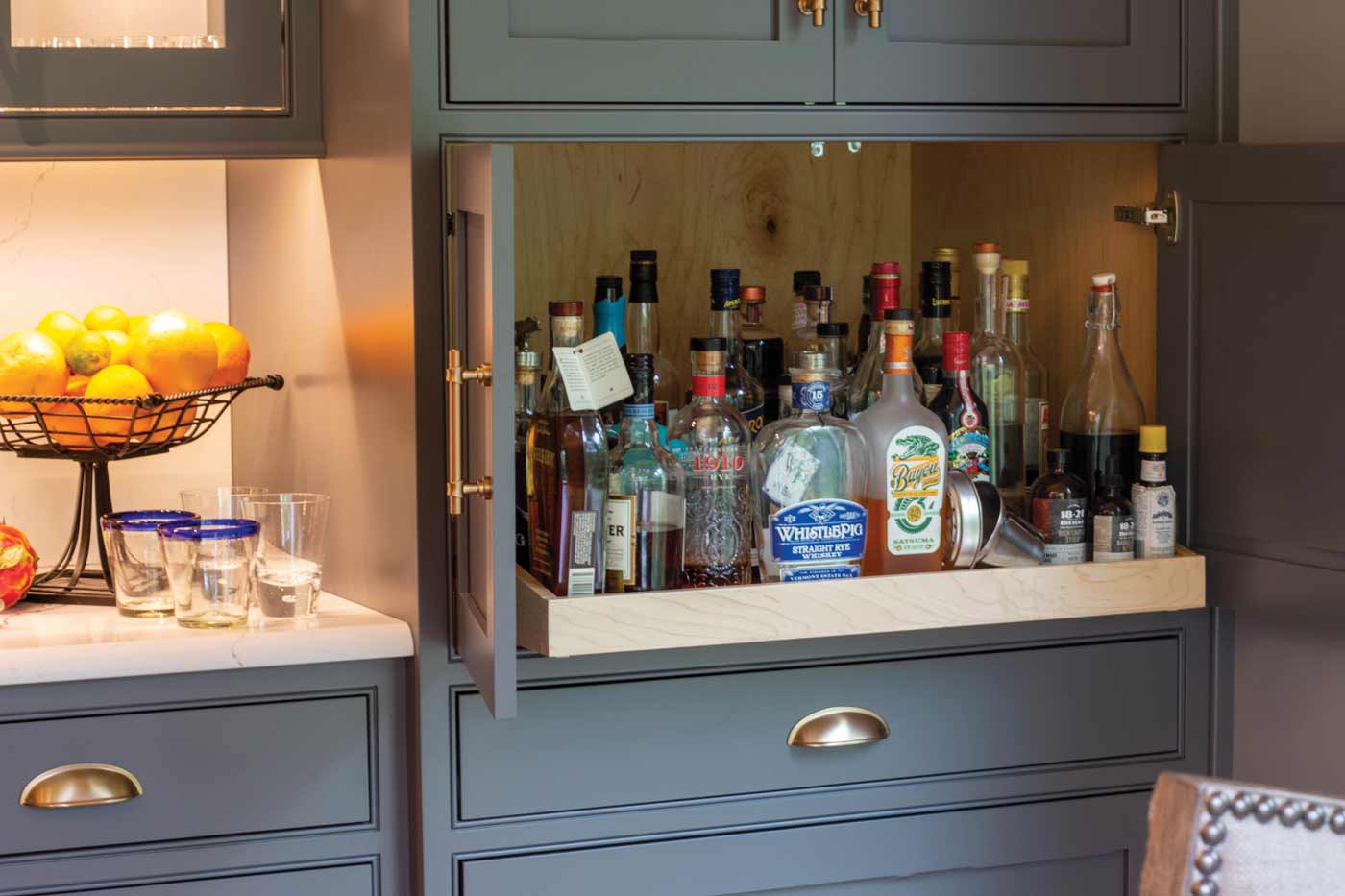
Cabinetry that’s outfitted with pull-out trays holds spirits, barware and other necessities for entertaining.
Thanks in part to those resourceful Millennials, the look of the formal dining room has changed. Instead of resembling something akin to Buckingham Palace (which comes at a hefty price), the new dining room is infused with personality and reflects its owners’ lifestyle and interests (for example, homeowners are outfitting the rooms with built-ins to display collections that range from plants to books).
As a result, the dining room has become a modern-day salon in which people carry on conversations, enjoy a meal and linger over a post-dinner drink or a cup of coffee. (In many households, it’s become a no-phone zone.) It’s become a gathering place for neighborhood happy hours (repurposed pieces such as a vintage secretary or a buffet/sideboard are being used to create bars).
The dining room has also become a getaway. “Because of Covid, people saw the drawback – mainly a lack of privacy – of open-concept floor plans,” says Amy Sensenig, who is an interior designer with
TK Building & Design in Lancaster. “They want a place where they can get a moment for themselves.
“We’ve seen a lot of interest from clients who want to create separate spaces in their homes,” Amy continues. “I don’t think the open-concept floor plan is going away, but togetherness is prompting people to think about creating getaways in their homes.”
For many homeowners, the dining room is providing such a space. Upholstered furniture is being added to the room in order to create a quiet space where one can read or simply indulge in quietude.
A Room to Dine For
Ten years ago, Dean and Allyson Eberly built a home that mirrored their lifestyle – open-concept main floor that was conducive to family togetherness. The floor plan included a 12-by-12-foot dining room that was adjacent to but separate from the kitchen. “We didn’t use it very much,” says Allyson of its cozy dimensions. “In fact, we began using the finished basement as a makeshift dining room for holiday dinners.” Besides, their busy lifestyle – she’s an account rep for a wine company, he owns Garden Spot Mechanical and their then school-aged children were involved in a range of activities – didn’t mesh with sitting down to Ozzie and Harriet-style family dinners in the dining room every night. “We ate on the run a lot of nights,” Dean recalls.
Becoming empty nesters changed all that. Their new adult-focused life has pivoted to entertaining. “We really like to cook and have friends over for dinner,” Allyson notes. The size of the dining room put a damper on the number of guests they could invite, which prompted them to begin discussing how they could remedy the situation. “That was two or three years ago,” she recalls. Dean, who calls “design work” a favorite hobby, began to explore their options. Fortunately there was enough space to build an addition that would extend the dining room by 16 feet.
Dean asked Jon Warner, who had built the house, to recommend a remodeling company for the project. Warner suggested TK Building & Design. The Eberlys contacted owner Tim Kotzmoyer and shared their vision with him. Interior designer Amy Sensenig was brought into the project.
The Eberlys’ vision of an entertaining-friendly dining room included walls of floor-to-ceiling windows that would provide views of the surrounding woodland and farmland; a vaulted ceiling; layered lighting and a wet bar with storage. Dean was aware they were walking a fine line from a size perspective. “Bigger is not always better,” he explains, theorizing that if a dining room is too big, “you lose that sense of intimacy.”
As Amy explains, delivering on details is what Tim specializes in. Add in Dean’s design expertise – “Dean knows what he wants,” Amy says – and she knew she was involved in a one-of-a-kind project. Work commenced in December 2019 and was completed in April 2020.
Light was deemed a critical component of the addition. The layers ultimately included natural light that filters into the room during the day via the expanse of windows. Another element is uplighting that is emitted from behind the moldings. Under-cabinet lighting provides task lighting and adds to the ambiance, as well. Finally, the five various-sized, sphere-shaped chandeliers not only illuminate the room but provide a wow factor. “We looked for the right chandeliers for a long time and finally found them through Restoration Hardware,” Dean notes.
The wet bar, which encompasses a good portion of the addition, is outfitted with custom cabinetry, a custom-stained wine rack, a sink, a wine fridge, pull-out trays and drawers that hold linens and other necessities. Quartz covers the counters and backsplash. “Having everything at hand makes setting the table very easy,” Allyson says.
As for the farm-style table, which comfortably seats 12, that was a project undertaken by Dean. “During the lockdown, I decided I would make the table myself,” he explains. After designing the table and purchasing a Douglas fir beam from Riehl’s Construction in New Holland, he set to work, using his own techniques for adding texture to the wood. “I enjoy tackling design challenges,” he says. Woodworking is in his DNA. “My dad was a hobby woodworker,” he explains. “I learned from him. I made my first dining table when I was 19.”
Add in comfortable chairs and the Eberlys find themselves entertaining a captive audience. “It’s become one of our favorite rooms,” says Allyson. “At Thanksgiving, we had 20 guests for dinner. Everyone stayed in the room the entire time – in previous years, we’d have dinner and then scatter to other areas of the house.”
The connection to nature – “the scenery constantly changes,” says Allyson – also lulls guests into a state of relaxation. The Eberlys’ wooded property is a magnet for wildlife such as deer, birds and foxes. “We like to eat breakfast in the dining room on weekends,” Allyson notes. “Before we know it, a couple hours have passed!”
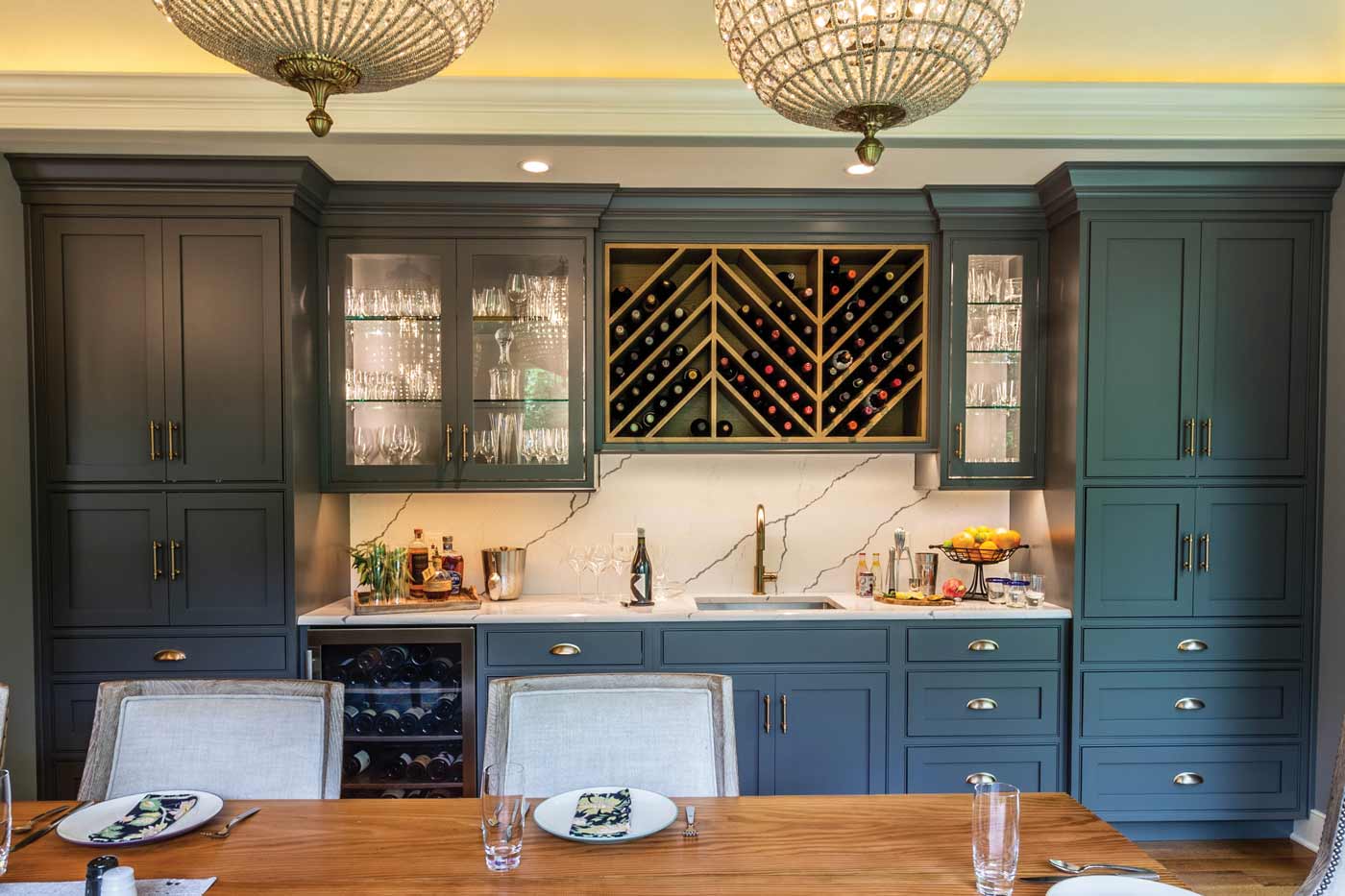
The built-in wet bar provides storage space for table-setting necessities and functions as a bar when the Eberlys entertain.
The Eberlys have also discovered a new hobby that is suited to the dining room. In search of something to help his mother pass the time during the height of Covid, Dean discovered paint-by-number kits for sale on Amazon. He bought several and told friends who have senior-aged parents to purchase some, as his mother loved her new hobby. Soon, Dean and Allyson found themselves hooked, as well, and were painting away in their dining room. Dean hangs his creations in his new home office that is a repurposed bedroom.
TK Building & Design
Creating home offices, classrooms and other dedicated spaces is part of the reason why companies such as TK Building & Design are so busy. “With people spending so much time at home, they’re discovering they weren’t built with a pandemic in mind,” says Amy. As a result, homeowners are remodeling their homes, adding on to them and expanding them with outdoor spaces that serve a multiplicity of purposes.
Amy remembers spending the lockdown at home, wondering if she’d have a job to go back to. Little did she know that she had nothing to worry about. When TK reopened, “We were slammed with phone calls, and it shows no signs of slowing down,” she says. “The holidays are usually slow, but in 2021, we worked right through them.” Amy, who is a graduate of the Art Institute of York, recently earned her CKBD credentials on top of maintaining an ongoing hectic schedule.
TK Building & Design celebrated its 10th anniversary last year. Tim, whose credentials include completing the residential carpentry program at Lancaster County Career & Technology Center, worked for a custom builder for six years before he launched his own business in 2011. The company’s résumé includes such projects as Melhorn Manor in Mount Joy, Rachel’s Creperie (Downtown Lancaster and Richmond Square) and countless remodeling projects in homes across Lancaster County.
Just recently, TK Building & Design was the recipient of six Remodeling Achievement Awards – including one for the Eberlys’ dining room – presented by the Building Industry Association of Lancaster County. In addition, Tim was also elected to serve as the association’s vice president for 2022.
For more information, visit tkbuilddesign.com.
Credits
• Design/Build: TK Building & Design
• Interior Design: Amy Sensenig, TK Building & Design
• Chandeliers: Restoration Hardware
• Table Wood: Riehl’s Construction
• Woodworker (Table): Dean Eberly
The Dining Room is Good for Your Health!
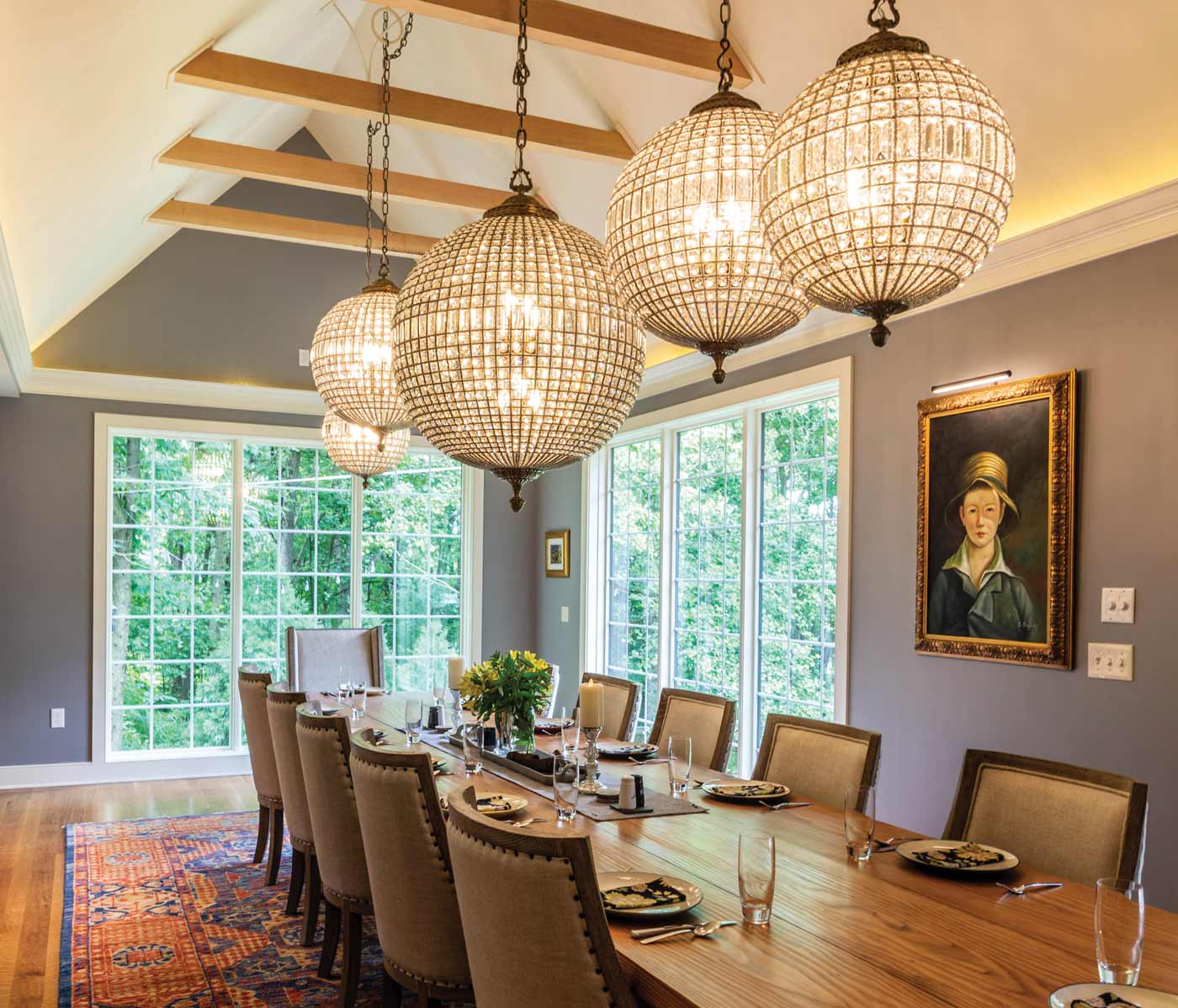
Light was essential to creating ambiance for the dining room. The layered lighting comes courtesy of the windows, the chandeliers, up-lighting (behind the moldings) and under-cabinet lighting. Panels that are subtly hidden in the peak of the ceiling dampen the noise level in the room.
Remember the good old days, when families would gather around the dining room table on a nightly basis to enjoy a home-cooked meal and discuss everything from school to the state of the world? Well, thanks to Covid, that tradition is making a comeback. Since many families are banning cell phones from the dining room, children are learning the art of conversation. They’re also learning table manners.
Having a sit-down meal establishes an end-of-day routine that helps adults forget the stresses of the day and reintroduces children to the concept of having chores to do, i.e. setting the table, clearing it, filling the dishwasher, etc.
Enjoying a meal in the dining room is also good for your diet. Instead of mindlessly eating in front of the television, sitting at a table promotes mindfulness. Concentrating on your meal without distractions, such as the television and a phone, can result in better digestion, etc., and set the stage for a relaxing evening. Because you leave the table feeling noticeably fuller, you might be less inclined to snack later in the evening.





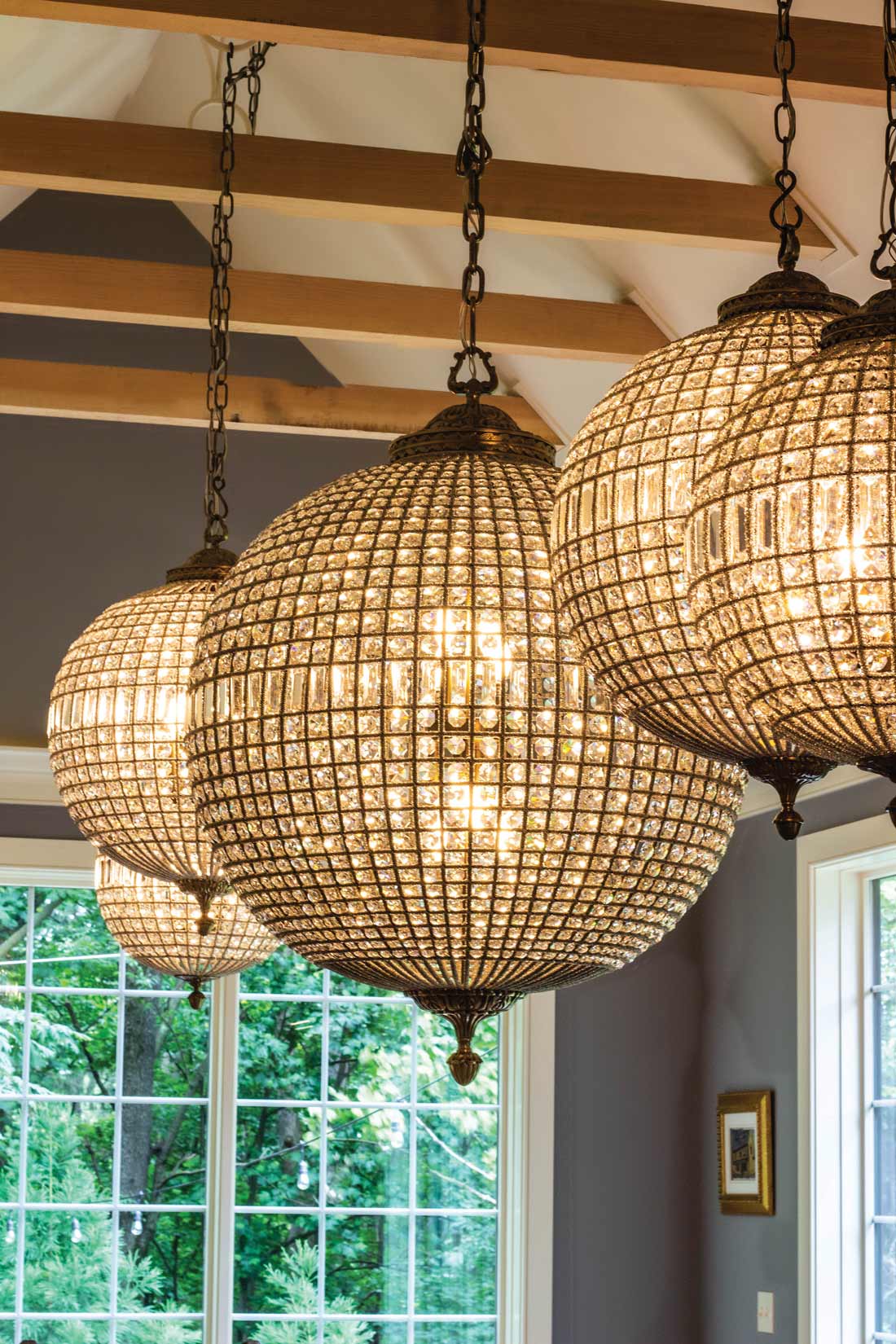
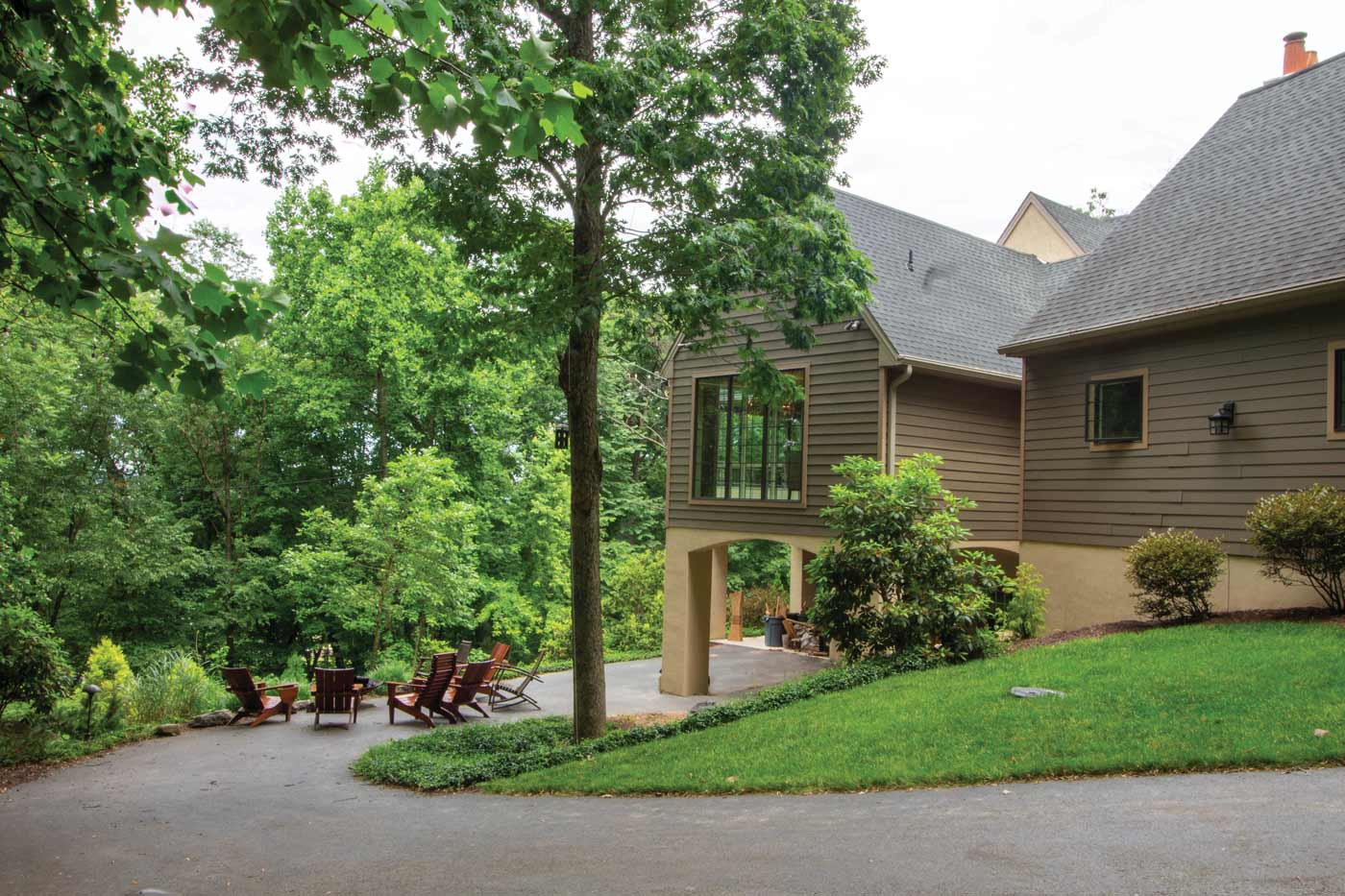
SHARE
PRINT